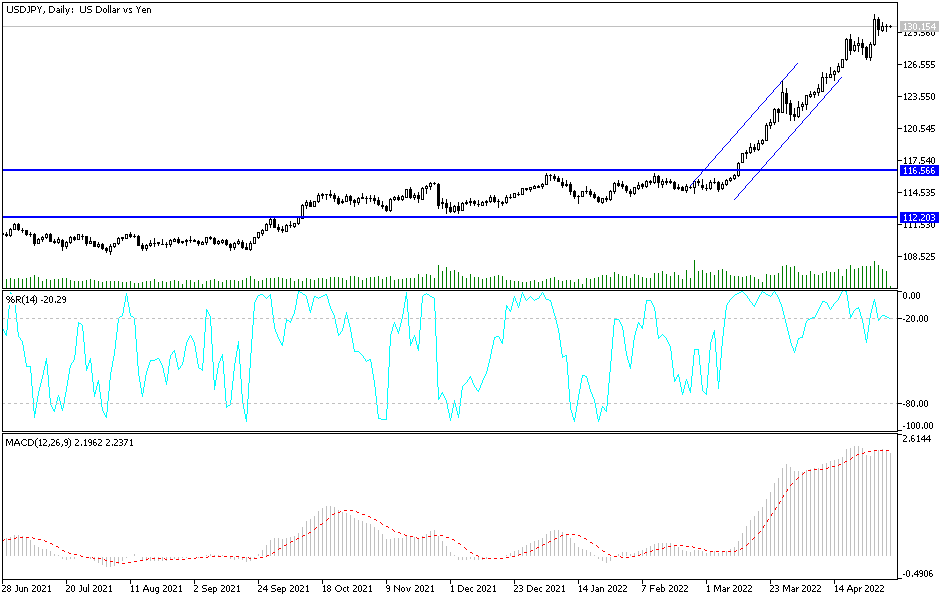The US dollar pairs, with their recent sharp gains, await the decisions of the US Federal Reserve today, which may determine sticking to those gains and increasing them or losing them due to selling operations to take profits. Today, the US central bank is preparing to accelerate its most radical move in three decades to attack inflation by making borrowing more expensive. However, with US inflation soaring to a 40-year high, the Fed has been under extraordinary pressure to act aggressively to slow spending and curb price hikes that are overwhelming households and businesses.
After its last rate-setting meeting ends on Wednesday, the US Federal Reserve will almost certainly announce that it is raising its benchmark short-term interest rate by half a percentage point — the largest rate increase since 2000. The Fed is likely to implement another half-point interest rate hike at its next meeting in June and possibly at the next meeting after that, in July. Economists expect prices to continue to rise in the following months.
Moreover, the bank is also expected to announce today that it will quickly start reducing its massive stock of Treasury and mortgage bonds starting in June - a move that will have the effect of further credit tightening. Bank Governor Jerome Powell will take these steps largely in secret. No one knows how far the central bank's short-term interest rate must go to slow the economy and rein in inflation. Nor do officials know how far they can reduce the Federal Reserve's unprecedented $9 trillion balance sheet before they risk destabilizing financial markets.
However, many economists believe that the Fed is already acting too late. Even with inflation rising, the US interest rate is in a range of only 0.25% to 0.5%, a level low enough to stimulate growth. Adjusted for inflation, the Fed's key interest rate - which affects many consumer and business loans - is deep in negative territory.
Powell and other Fed officials have said in recent weeks that they want to raise interest rates “quickly,” to a level that neither strengthens nor dampens the economy — what economists refer to as the “neutral” rate. Policy makers consider the neutral rate to be close to 2.4%. But no one knows what a neutral rate will be at any given time, especially in a rapidly developing economy. As most economists expect, the Fed implements three half-point rate increases, and then three quarter-point increases followed, its rate will be nearly neutral by the end of the year. Roberto Burley, an economist at Piper Sandler, noted that these increases would mark the fastest rate of rate hikes since 1989.
According to the technical analysis of the pair: If the tone of the US Federal Reserve today becomes less severe regarding the future of raising US interest rates, the dollar-yen currency pair may be exposed to profit-taking operations. There is no doubt that the return of the stability of the USD/JPY currency pair around and above the 130.00 psychological resistance will continue to support the strength of the upward trend. It will warn of a stronger upward move, and the closest to it is currently the resistance levels 130.85, 131.20 and 132.00, respectively. Forex investors still ignore the arrival of technical indicators towards overbought levels and focus more on the continuation of the factors of the US dollar's strength. This is led by the future of raising US interest rates and the clear contrast between the policy of the Federal Reserve and the Japanese Central.
On the downside, and according to the performance on the daily chart, the currency pair needs to break the support 126.90 to change the current trend to the downside.


